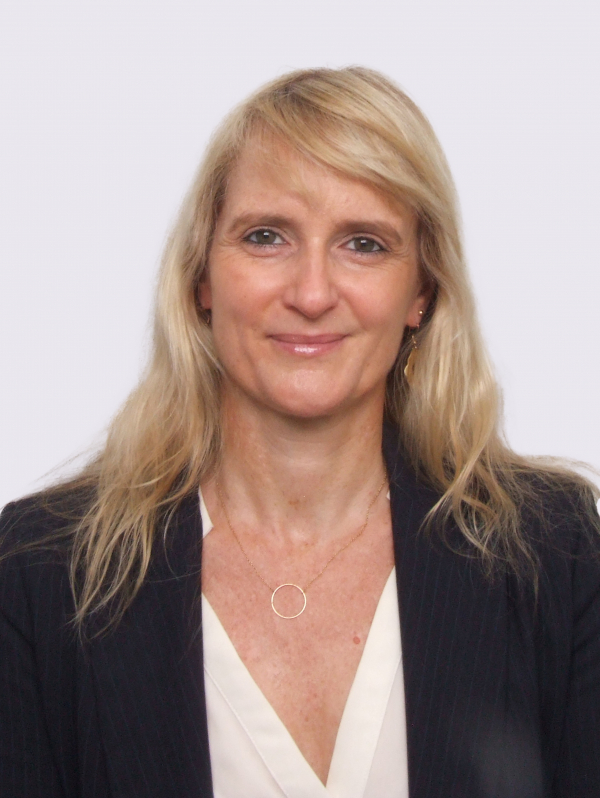 Françoise PENAUD
Françoise PENAUD
Head of Economics and Regulation
GRDF
France’s leading natural gas distribution operator (GRDF) has been supporting research at TSE for more than four years. TSE researchers have been working in close connection with GRDF teams to address key challenges in network economics. Françoise Penaud, who heads the GRDF team in charge of economics and regulation, spoke to us about how this partnership is guiding efforts to adapt French infrastructure for the fight against climate change.
What is your role at GRDF?
The French Energy Code empowers the French Energy Regulatory Commission (CRE) to define the methodology for establishing tariffs for the use of natural gas distribution networks. CRE can make changes to the tariff levels and structure which it deems justified with regard to an analysis of the operators’ accounts and any expected changes in operating or investment expenses.
Within GRDF, I manage the relations and discussions with CRE’s teams in charge of network regulation. The GRDF distribution tariff is fixed every four years. It is a one-year long process that involves a lot of stakeholders, public consultations and working sessions. Between these tariff discussions, we have a permanent relationship with the regulator’s team to address annual tariff updates and incentive regulation mechanisms. I am also in charge of our research partnership with TSE launched 4 years ago by my predecessor Laurent Renat.
What are the major challenges facing GRDF today?
The main challenge for GRDF is to convince stakeholders that there is room for green gas and advanced gas technologies on the French energy transition path. GRDF is convinced of the need to reduce the use of fossil-fuel gas. The rise of renewable green gas, which can be produced locally from the breakdown of organic matter, is an opportunity for the existing gas infrastructure to play a major role in this energy transition, and in balancing the French energy system.
For the past 15 years, GRDF has promoted biomethane production and this is now framed by French law. The regulator has validated more than 330 biomethane injection schemes that will allow more than 1,100 sites to produce up to 35TWh of green-gas energy every year. GRDF has also promoted the development of high-performance gas devices, like hybrid boilers which couple gas power (mainly used during cold snaps) with an electric heat pump.
What is the focus of your partnership with TSE?
 We launched this partnership in June 2019 to address tough economic questions raised by the trend of falling gas consumption. We initiated academic and econometric studies on cost allocation in the distribution network with the TSE team (Philippe de Donder, Frédérique Fève, Elena Pavlova and Michel Le Breton). This is our main focus, although our partnership covers different fields of study.
We launched this partnership in June 2019 to address tough economic questions raised by the trend of falling gas consumption. We initiated academic and econometric studies on cost allocation in the distribution network with the TSE team (Philippe de Donder, Frédérique Fève, Elena Pavlova and Michel Le Breton). This is our main focus, although our partnership covers different fields of study.
As we gradually move from local distribution networks fed by one source (the transmission network) to multi-sourced networks with green gas producers, this topic will probably become an important research theme in the coming years.
GRDF has also rolled out 11 million smart meters (GAZPAR) in the past six years. This is a very interesting opportunity to analyze a vast amount of data that may allow us to detect changes in consumer behavior and promote energy efficiency measures. After discussions with the TSE team about methodology, we are now collecting data samples. We have also been working on more specific problems like fair rate of return of infrastructure activities.
How is TSE research helping GRDF to fulfil its ambitions?
Decreasing demand for natural gas and the development of the green-gas injection network are disrupting the design, extension, and even operation of the GRDF network. In this context, it is vital for GRDF to prepare to reshape the distribution tariff structure. The TSE partnership brings us economic expertise and advanced modelling capabilities. The regulator of the tariff design expects us to demonstrate rigorously that any changes we suggest will greatly improve tariff fairness for network users and avoid or limit negative side effects. To support our demonstration, it's important for us to be able to rely on independent scientific research results.
GRDF and TSE teams share a very constructive and productive approach. Making significant changes in the gas distribution tariff structure will be a very long process. There is little academic research on cost allocation in this industry and there is no off-the-shelf solution to these questions. It was of the utmost importance for GRDF to find strong economic expertise on a long-term basis.
The TSE partnership allows the GRDF team to master various economic concepts and methodologies. We also share with TSE members our experience of network design practices and the regulatory environment. After a huge econometric study led by TSE economists, we are now close to achieving a first step with a rigorously substantiated cost function of our distribution network and to beginning work on designing an optimal tariff without any constraint. These studies will probably lead to economic research publications by TSE that we will discuss later this year.
Interview published in TSE Reflect, September 2023
About GRDF-TSE Partnership
Photo © Françoise Penaud, Pexels
